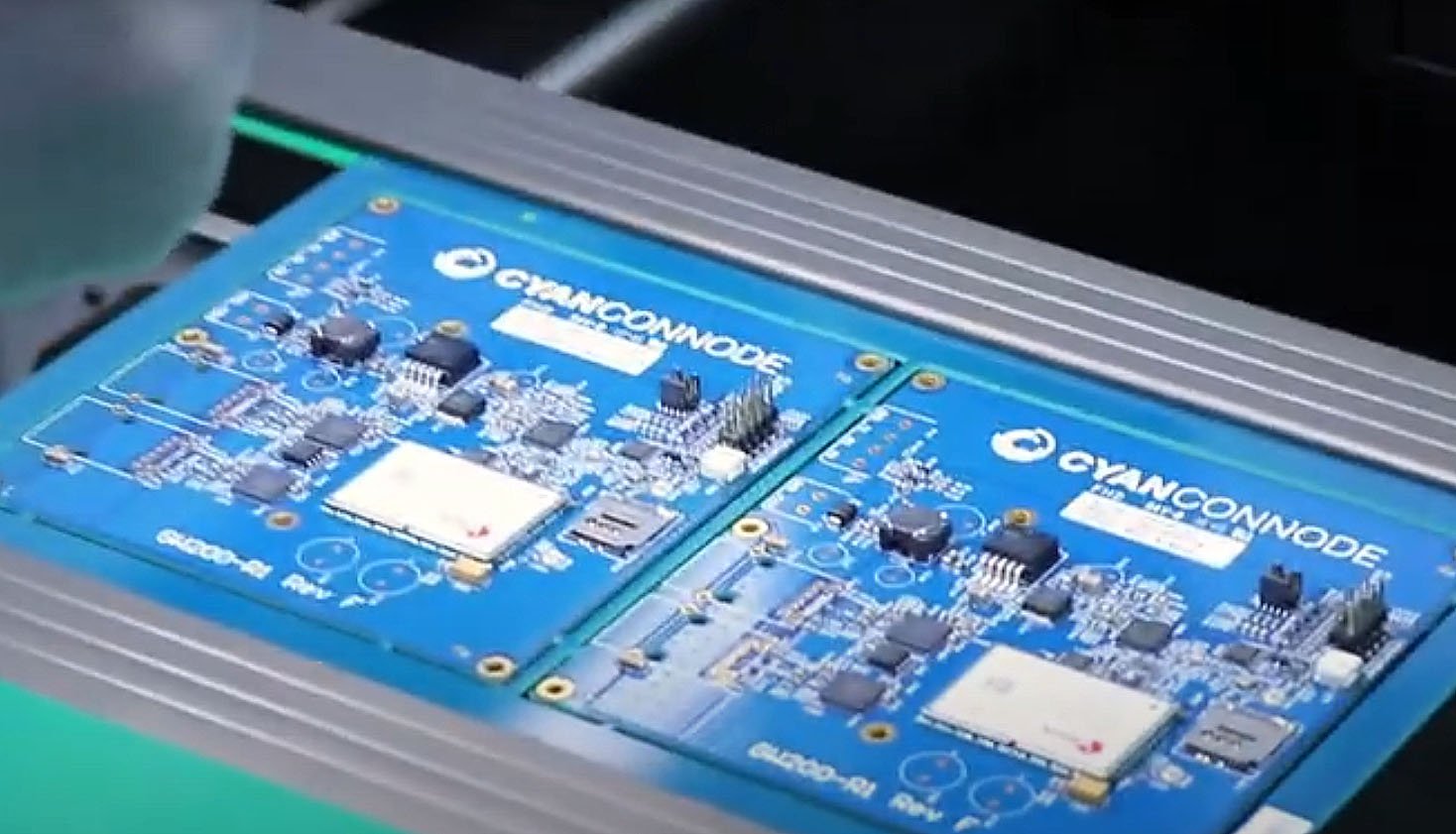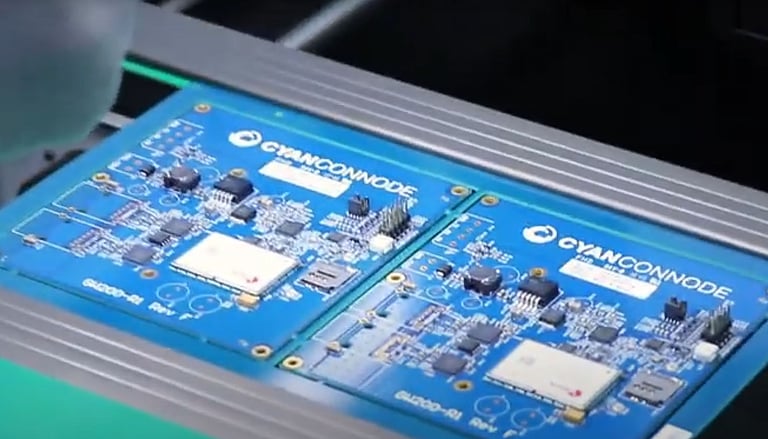John Cronin, Executive Chairman of CyanConnode Holdings plc (LON:CYAN), discusses with Darren Turgel, MD of DirectorsTalk, about his latest meeting of the Climate Finance boardroom organised by India Global Forum (IGF).
- John, as one of the key stakeholders in the UK-India partnership on Energy and a key advocate of the “Global Green Recovery”, tell us more about the importance of digitising the Energy Sector – Smart Meters to Smart Grids
‘Quantum Leap’ is the phrase used by Indian Prime Minister Narendra Modi in expressing his ambition for the UK India partnership following his virtual summit in May with his UK counterpart, Boris Johnson. This week, we have over 100 world leaders attending COP26 in Glasgow, increasingly advocating a “Global Green Recovery”. A vital element of this proposed growth plan is green investments.
Digitising the Energy Sector is a real earthly feet on the ground Project that private investors can execute on. As digitalisation is being seen as key solution to the burgeoning problems of Discoms, the smart meters offer a strong base for enhancing financial and operational efficiencies through digitisation. Smart Metering is now at the forefront of government’s reforms priority list. A deep commitment by the Government of India on energy transition through smart metering is reflected well in recent policy & regulatory developments in terms of the Revamped Distribution Sector Scheme (RDSS) and the financial commitments of more than INR 3 lakh crore.
- I understand that only circa 2.5 million smart meter units have been ordered out of the 250 million that need to be replaced in India. What needs to happen now?
To date, projects have been done on a Capex basis or by EESL BOOT model, so only around 2.5 million units have been ordered to date. There are three important steps to my mind:
- Scalability – We now need private Infrastructure funds to step up and put in place platforms such as Special Purpose Vehicles (SPV’s), to fund the role out of smart metering at the pace required. Tenders currently being released are now in the millions of meters.
- Step by step – project funding of up to US$20 billion will be required giving 15% IRR to funds. Projects will be on an opex basis ie per meter per month over c. 10 years.
- Payment security – ‘bankable’ payment security mechanisms will be required to include Escrow accounts and rolling Letters of Credit.
As a result, Smart Metering will give a ‘cash positive’ storyline and build on the Meter Asset Provider (MAP) models in UK/EU and elsewhere.
- What is the timeline for replacing the existing 250 million meters with smart meters in India?
A recent gazette notification released by Government of India stipulates that all Industrial, Commercial, Residential and Government consumers in India, except Agriculture consumers, in areas with communication Networks, shall be supplied electricity along with Smart meters with prepayment features. The target is to replace 250 million meters by 2025.
The timeline for replacing the existing 250 million meters with smart meters has been split into two phases:
The total meters to be covered in this first phase is 100 million. In the first phase, the following areas shall be metered with smart meters with prepayment mode by December 2023:
- All Union Territories,
- Electrical divisions having more than 50% consumers in urban areas with AT&C losses more than 15% in financial year 2019-20
- Other electrical divisions with AT&C losses more than 25% in financial year 2019-20. ($32 Billion a year is lost revenue not collected by Discoms)
- All Government offices at Block level and above, and
- All industrial and commercial consumers
All other areas shall be metered with smart meters with prepayment mode by March 2025 in the second phase.
- What else is the Government of India doing as a stimulus to the Smart Metering movement in the country?
The Government also recently announced funding of a circa £30 billion “Revamped Power Distribution Scheme” aimed at creation and strengthening of the Transmission and Distribution infrastructure. This will be provided by an outlay of 15% against the total Project cost c. £15 billion of installing approximately 250 million smart meters in the country in PPP mode. The Ministry of Power, Government of India has also floated a standard bidding document and a contract agreement that can be directly adopted by utilities for rolling out the Smart metering programme. These steps have acted as a catalyst in spurring the Smart Metering movement in the country as the scale of tenders has gone up from tenders for a few thousand meters, to tenders for millions of meters.
This has already delivered some quick wins now. There are currently tenders for 11 million meters (total cost of c. £1 billion) that are being floated or will be floated shortly. Given the Government’s ambition these numbers are only going to increase exponentially in the near future. As a result of this, numerous SPV’s with Infrastructure funds will be required to fund these tenders.
- What are some of the benefits of Smart Metering deployment and leveraging smart grid improvements on this massive scale?
There is a real multitude of benefits for all stakeholders and I’ll mention a few of them now at a high level:
- Affordability for all – Discoms benefit by collecting more monthly cash than cost of smart meter, consumer gain with lower tariffs
- Automation – no manual reading of meters, leading to a greener economy
- Accelerate the smart grids. In the current situation where energy (power) shortages are increasing, smart grids can help in dynamically managing the demand and supply
- Digitising the Power Industry
- Big Data Analysis with Artificial Intelligence capabilities.
- Value proposition – scalability, utilising Eco-system of partners
- Generating net power from rooftop solar; selling back to grid – managing demand curve.
- Accelerate renewable energy and prevent future energy shocks owing to distributed generation
- Renewable Integration
- Better cashflow management for the Discoms (Prepaid, Higher cash velocity) and increase in collection efficiency
- Mesh Hybrid communications being the only successful (99.5% Service Level Agreement) solution
- Data analytics managing out of date white goods, and educating consumers as to electricity usage habits
- Made in India, hardware reduce carbon footprint
- Less building of power plants, avoid using old ones
- Lower electricity demand and usage
- Time of day usage
- Electric cars charged by wind and solar
Other key benefits include:
- Consumer usage management
- Reduce cost of supply
- Revenue enhancement & Leakage protection
- Reduce losses by real time monitoring and employing AI
- Network optimising – leading to billing efficiencies and reducing Technical losses
- Demand curve management
- Power Reliability & foster outage management
It’s therefore more important than ever to accelerate the transition to green energy sources and technology, and to enhance monetary policy to actively drive institutional capital for these types of climate projects in India.
CyanConnode Holdings Plc (LON:CYAN) is a world leader in the design and development of Narrowband RF mesh networks that enable Omni Internet of Things (IoT) communications. With a wealth of expertise and experience in smart technology, the Group provides customers with long-range, low-power, end-to-end networking solutions and high-performance applications that help them enhance service delivery, improve business efficiency and save energy.








































